- USD/CHF remains heavy as rate differentials drive market action.
- Watch for a potential downside break from the bear flag pattern.
- Fed and SNB rate decisions are the key risk events for traders next week.
Interest rate differentials between the United States and Switzerland have reasserted control over USD/CHF movements, making next week’s U.S. Federal Reserve and Swiss National Bank (SNB) policy decisions a blockbuster two-day market event. Sitting in what resembles a bear flag pattern, traders should be alert to the risk of a resumption of the broader bearish trend.
Rate Differentials Reassert Control
Interest rate differentials are once again dominating USD/CHF movements. Over the past month, there has been a rolling daily correlation between the U.S. and Switzerland, with United States 2-Year and United States 10-Year spreads at 0.93 and 0.89, respectively.
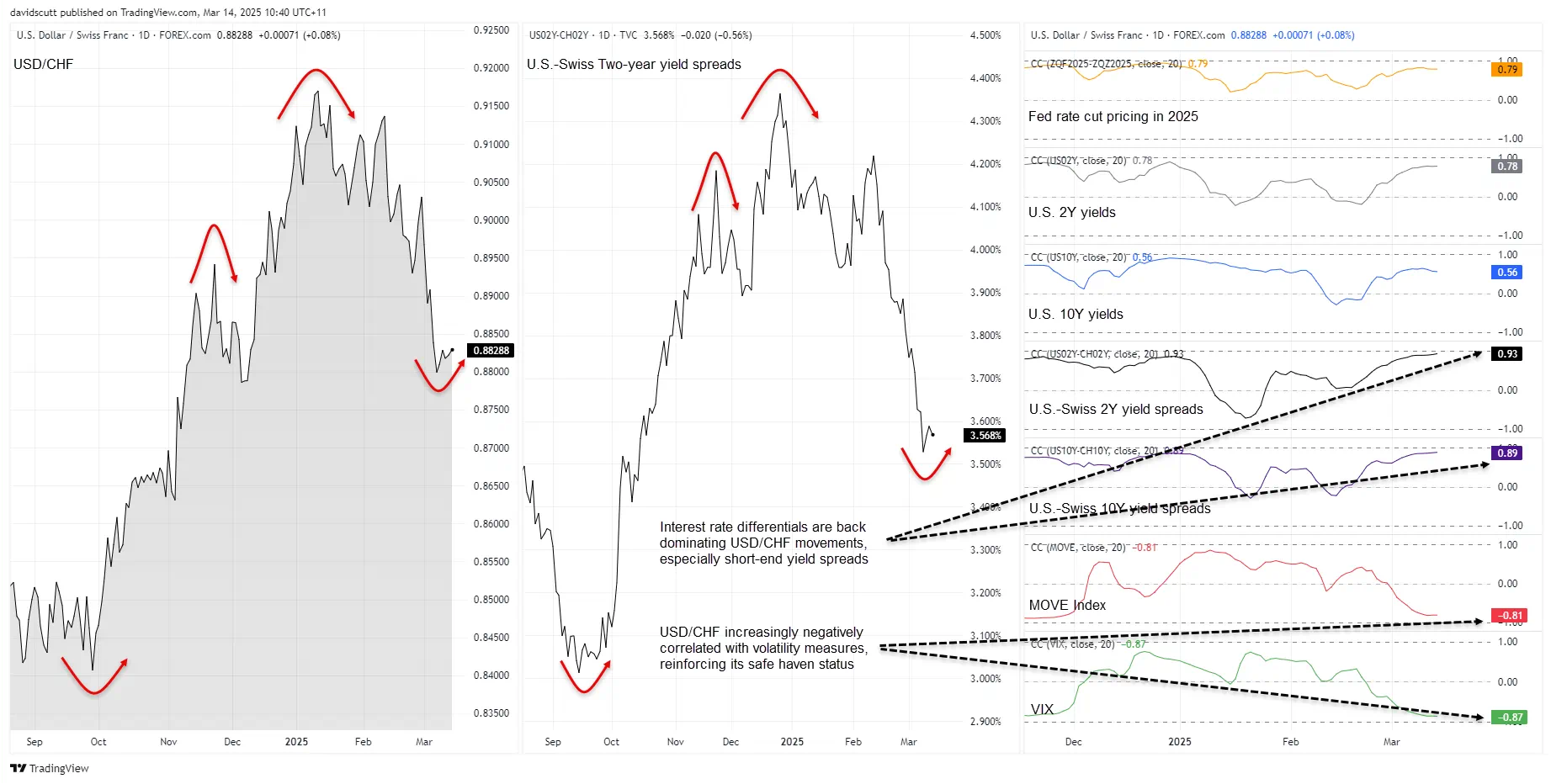
Source: TradingView
Digging into those extremely strong relationships, they largely reflects shifts in U.S. rates markets, especially at the front-end of the curve which is most impacted by central bank expectations. However, the recent lift in Swiss yields—spurred by plans for increased fiscal spending across the E.U. and a potential end to the war in Ukraine—has also been a factor, helping to narrow yield differentials and pressure USD/CHF lower.
The franc has also not lost its safe-haven appeal, maintaining a strong inverse relationship with expected 30-day volatility in U.S. equities and Treasuries over the same timeframe.
It’s little wonder why USD/CHF is looking heavy on the charts and at risk of resuming the bearish trend established earlier this year.
Fed, SNB Rate Decisions Loom Large
Aside from volatility created by U.S. trade policy—which resembles the random function on my school calculator given the speed at which it turns—the message from the correlation coefficient analysis is clear: next week’s Federal Reserve and SNB interest rate decisions are major events for USD/CHF traders
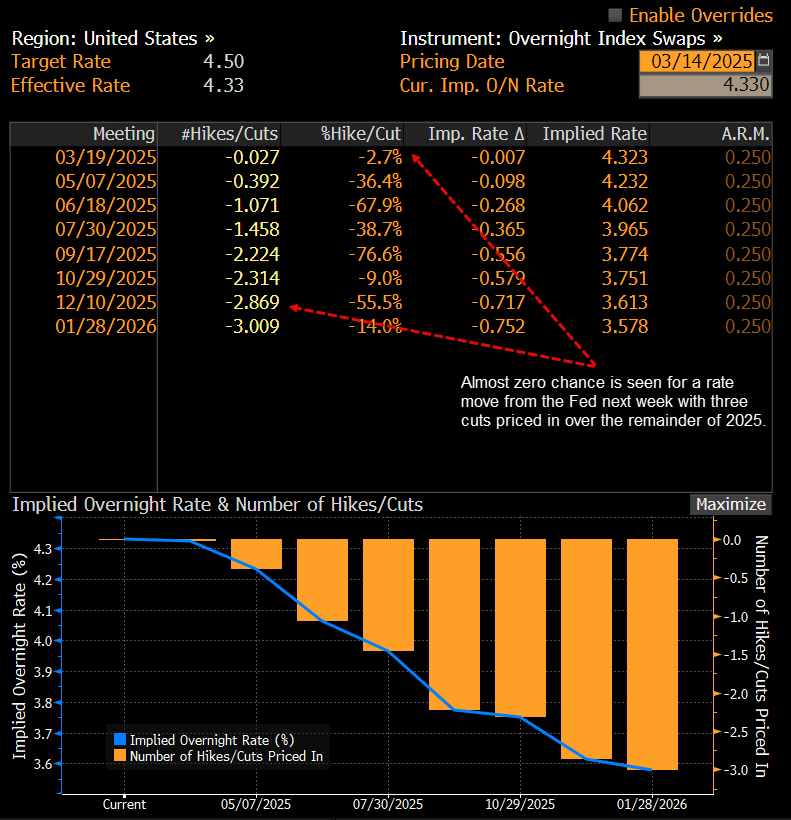
Source: Bloomberg
Traders attach almost zero chance of the Fed funds rate changing next Wednesday, putting the probability at just 2.7%. Nada. That means the Fed statement, revised dot plot tracking individual member expectations for the funds rate, and Jerome Powell’s press conference will guide direction. Three cuts are currently favoured by the end of 2025, up from just one a month ago. Three months ago, the median FOMC forecast had two cuts pencilled in for this year. If the Fed delivers an assessment similar to market pricing, it may spark another leg lower in U.S. Treasuries, likely putting downside pressure on USD/CHF if that eventuates.
1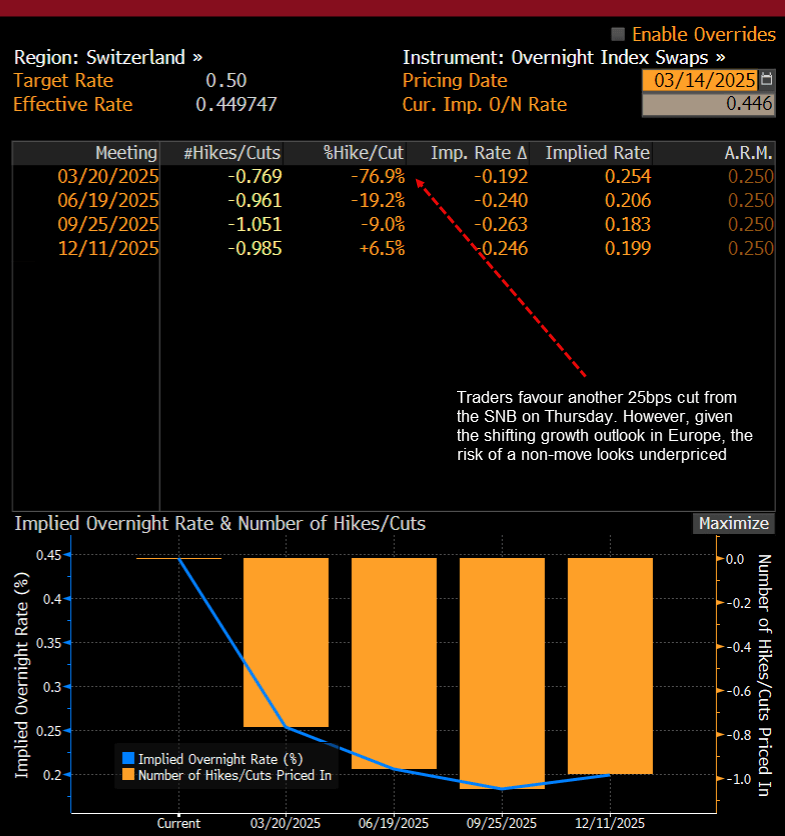
Source: Bloomberg
Whereas a Fed rate move is highly unlikely, markets favour another 25bp rate cut from the SNB, taking the overnight rate to 0.25%. At just over 20%, the probability of rates being left unchanged is low. However, the SNB has delivered multiple dovish surprises already this cycle, cutting more aggressively than markets expected early on. Given that track record, and with European growth expectations improving despite tariff uncertainty, don’t be shocked if the SNB delivers another surprise by standing pat. If it does, expect a kneejerk move lower in USD/CHF.
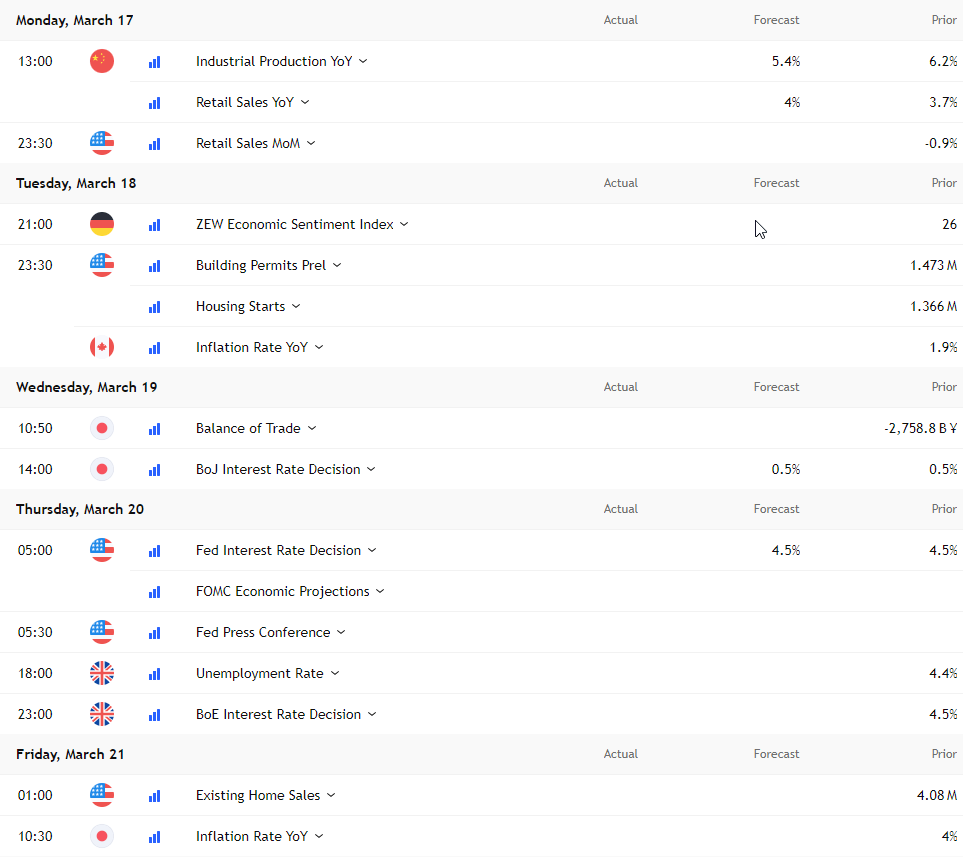
Source: TradingView
Before the Fed and SNB rate decisions, the only other known risk events likely to influence USD/CHF are Monday’s U.S. retail sales report and Wednesday’s BoJ policy decision. The latter could see the bank firm up expectations for another rate hike following early evidence from spring wage negotiations in Japan.
USD/CHF Bear Trend Pauses
The strong bearish trend for USD/CHF stalled this week, with buying support emerging beneath .8774, continuing the pattern seen in December. The net result has been a grind higher before running into resistance at .8854, forming what resembles a bear flag on the charts. That should put traders on alert for a potential downside break and resumption of the bearish trend.
Indicators like RSI (14) and MACD are providing mixed signals on price momentum, with the former trending higher while the latter remains below the signal line. However, the modest RSI (14) uptrend looks vulnerable, mirroring the unconvincing price action.
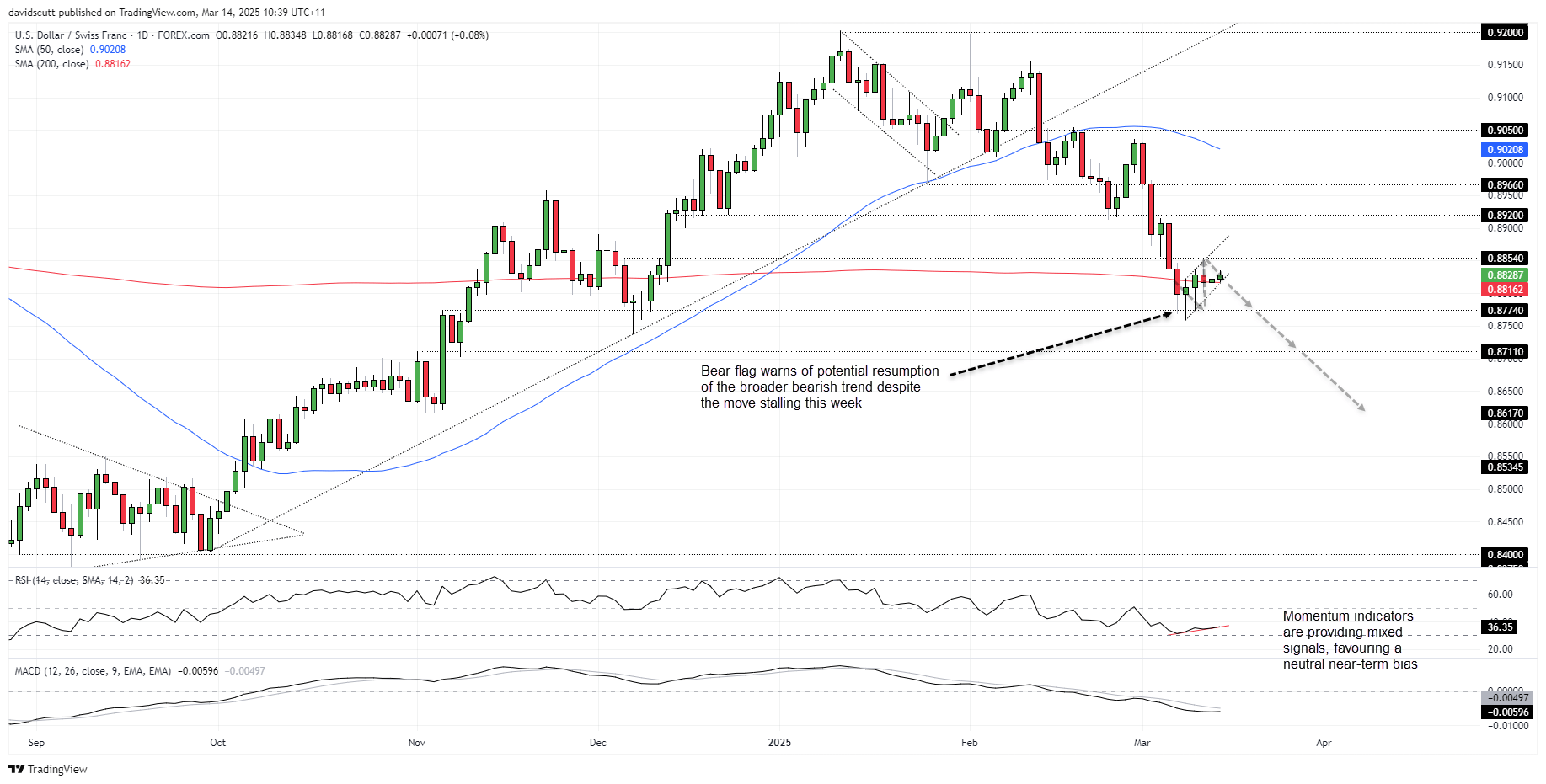
Source: TradingView
If the price breaks down from the bear flag, immediate levels of note include .8774, .8711, and .8617, the latter being a more substantial support level. On the topside, a break of .8854 would put .8920 and .8966 on the radar for bulls.
The price is hanging around the 200-day moving average like a bad smell this week, but having traded through it on multiple occasions like it didn’t exist, it shouldn’t be a major consideration for traders.
